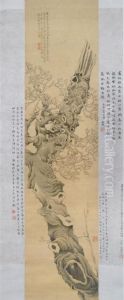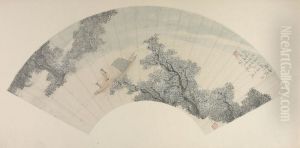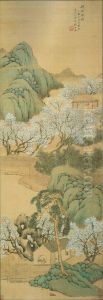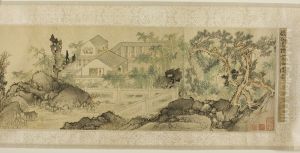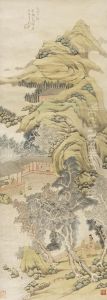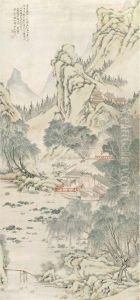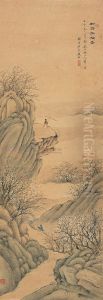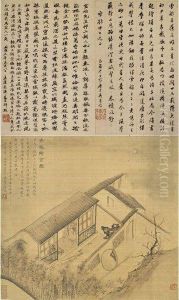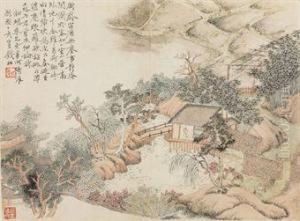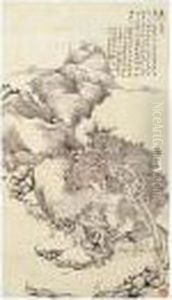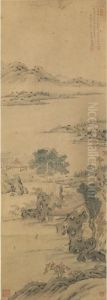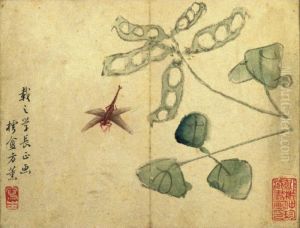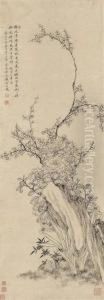Qian Du Paintings
Qian Du, also known as Qian Weicheng, was an esteemed Chinese painter from the Qing Dynasty, celebrated for his landscape paintings and his mastery of the 'literati' painting style. He was born in 1763 in Zhejiang Province, which was a region known for producing many of China's cultural and intellectual figures. Qian Du grew up during a period when the literati, or scholarly class, were often expected to be skilled in the arts, particularly painting, poetry, and calligraphy.
Qian Du's artistic career was marked by his dedication to the traditional Chinese painting techniques and his preference for the literati style, which valued personal expression and scholarly knowledge over the more decorative and commercial art produced for the imperial court or wealthy patrons. He was particularly skilled in depicting landscapes, using brush and ink with a lyrical and expressive touch that demonstrated both his technical prowess and his poetic sensibility. His landscapes often conveyed a sense of tranquility and harmony with nature, which was reflective of the literati ideals.
Throughout his life, Qian Du remained relatively detached from official positions, though he was well-respected in artistic circles. His works were characterized by their spontaneity and the use of 'xieyi' or sketchy-style brushwork, which sought to capture the essence or spirit of a subject rather than its detailed appearance. Qian Du was also influenced by earlier masters such as Huang Gongwang and Wang Meng, whose works he studied in depth. Despite his influence from past masters, Qian Du developed his own distinctive style and was recognized for his contributions to the development of landscape painting in China.
Qian Du lived through the reigns of three Qing emperors: Qianlong, Jiaqing, and Daoguang, witnessing significant political and social changes. Nevertheless, he maintained a focus on his art, leaving behind a legacy that would influence future generations of Chinese artists. He passed away in 1844, but his works continue to be appreciated for their serene beauty and historical significance within the tradition of Chinese painting.

